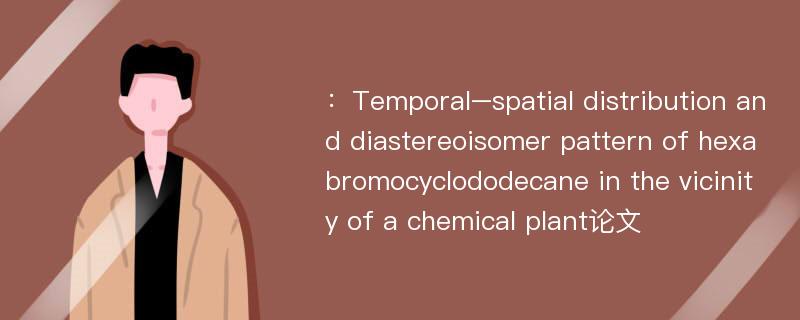
本文主要研究内容
作者(2019)在《Temporal–spatial distribution and diastereoisomer pattern of hexabromocyclododecane in the vicinity of a chemical plant》一文中研究指出:Hexabromocyclododecane(HBCD) is an effective brominated flame-retardant additive, which is mainly produced in the coastal area of China. This study collected soil samples from a HBCD production plant and its surrounding area in Weifang, Shandong Province, China, and analyzed the temporal–spatial distribution of HBCD and its diastereoisomers in soil. The analysis results showed that the concentration of HBCD in soil near the plant was much higher than normal values, with an annual average concentration reaching 5405 ng/g. Soils 1,2 and 4 km away from the plant were also analyzed, showing that the concentration of HBCD in soil decreased accordingly with the distance from the pollution sources. In order to investigate the effect of the season on HBCD content, the soil samples were collected in all four seasons of the year 2017–2018. According to variations in the wind direction, the concentration of HBCD in soil was also changed. The distribution trend showed that the concentration of HBCD in soil in the downwind direction of the prevailing wind was higher than that in the upwind direction. In addition, this work analyzed the distribution of HBCD in vertical soil sections. It was found that the concentration of HBCD decreased with depth in the soil vertical profile. Finally, the various diastereoisomer patterns in the soil compartments were examined, finding that α-HBCD and γ-HBCD were the predominant diastereoisomers in the soil of the study area.
Abstract
Hexabromocyclododecane(HBCD) is an effective brominated flame-retardant additive, which is mainly produced in the coastal area of China. This study collected soil samples from a HBCD production plant and its surrounding area in Weifang, Shandong Province, China, and analyzed the temporal–spatial distribution of HBCD and its diastereoisomers in soil. The analysis results showed that the concentration of HBCD in soil near the plant was much higher than normal values, with an annual average concentration reaching 5405 ng/g. Soils 1,2 and 4 km away from the plant were also analyzed, showing that the concentration of HBCD in soil decreased accordingly with the distance from the pollution sources. In order to investigate the effect of the season on HBCD content, the soil samples were collected in all four seasons of the year 2017–2018. According to variations in the wind direction, the concentration of HBCD in soil was also changed. The distribution trend showed that the concentration of HBCD in soil in the downwind direction of the prevailing wind was higher than that in the upwind direction. In addition, this work analyzed the distribution of HBCD in vertical soil sections. It was found that the concentration of HBCD decreased with depth in the soil vertical profile. Finally, the various diastereoisomer patterns in the soil compartments were examined, finding that α-HBCD and γ-HBCD were the predominant diastereoisomers in the soil of the study area.
论文参考文献
论文详细介绍
论文作者分别是来自Journal of Environmental Sciences的,发表于刊物Journal of Environmental Sciences2019年08期论文,是一篇关于,Journal of Environmental Sciences2019年08期论文的文章。本文可供学术参考使用,各位学者可以免费参考阅读下载,文章观点不代表本站观点,资料来自Journal of Environmental Sciences2019年08期论文网站,若本站收录的文献无意侵犯了您的著作版权,请联系我们删除。
